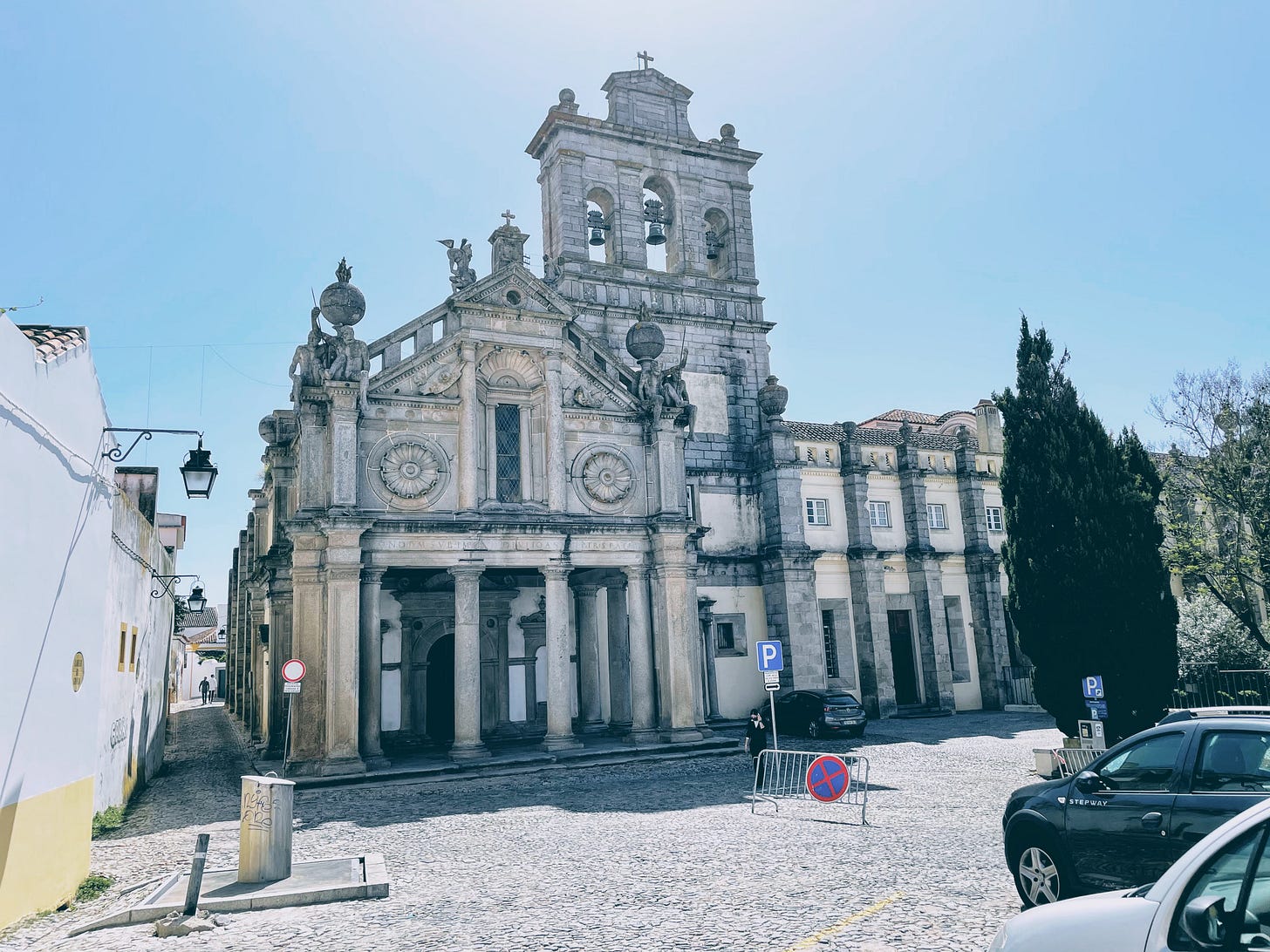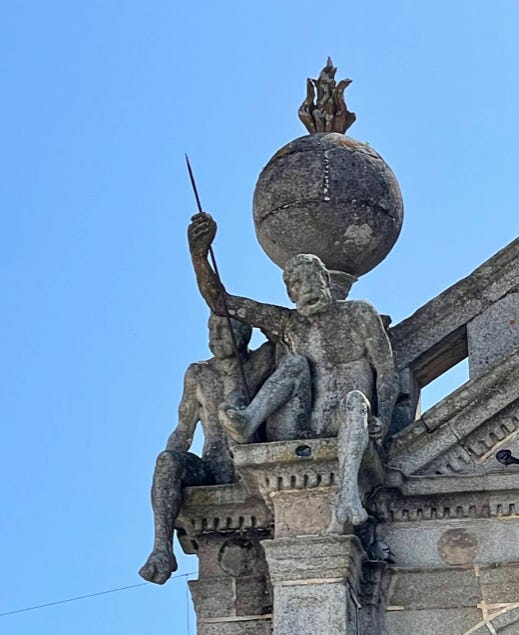I wanted to share one more item from our trip to Évora. It raises the question of what of our history is a true recounting of the events and what is just the stuff of legend.
The Travel Sites
If you look up “Igreja da Graça in Évora” on most travel sites you will find information such as the following:
Built in the 16th century, during the reign of D. João II;
Architectural designs by Miguel de Arruda in the Palladian style (classical forms, symmetry, and strict proportions, often austere):
Monumental doorway topped by a double fronton with angels above it:
Very plain interior, as its altarpieces and much of its art, was moved to Igreja de São Francisco:
In 1884, 50 years after the monks moved out, it was in ruin and the dome collapsed destroying tile panels depicting the life of Saint Augustine: and
Topped by four large mythological figures supporting globes, meant to symbolize the four corners of the Earth and the universal power of King João III
If you dig a bit deeper you may find this:
The famous Atlantean figures on the façade, whom the people of Évora have called the "Meninos da Graça" (the boys of grace) for centuries. — Wikipe.wiki
The Four Boys of Grace
Our walking tour guide, Sandra, referred to them as the four boys. She said the locals always referred to this place as the Church of the Four Boys. When we looked at the sculptures we weren’t sure we saw boys. In some ways they looked like the stage homo neanderthalensis, immediately preceding homo sapiens in the evolution of man. But with their facial hair, they were most certainly men, not boys.
She went on to explain that many believed they paid homage to those tortured and killed during the inquisition. In fact, the townspeople believed that the first people burned at the stake were four boys. “You see the flame on top of the globe, ” Sandra asked.
During our tour, we saw the hall which had been used for inquisition interrogation (torture) and across the courtyard the place used for the final trials. Neither of these buildings has signage that reflects their past. I wondered aloud how much of this part of Portugal’s past was covered in history classes. I thought about the attempts by state legislatures in Texas, Idaho, and Florida to mandate how the uglier parts of U.S. history are not discussed in school. I guess everywhere you find history, revisionist history, and the stuff of legend.





